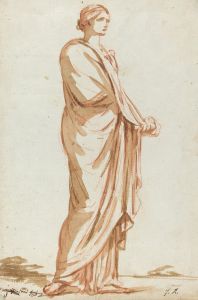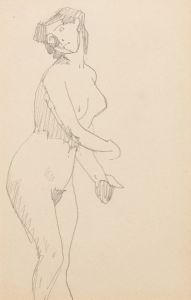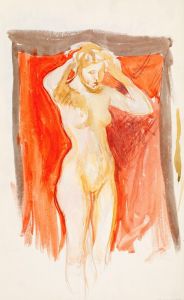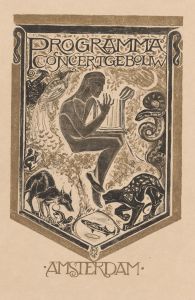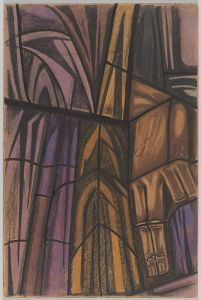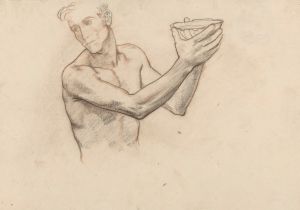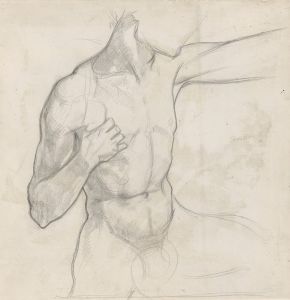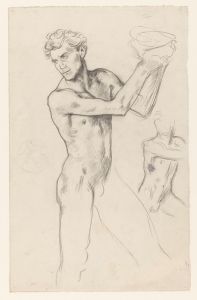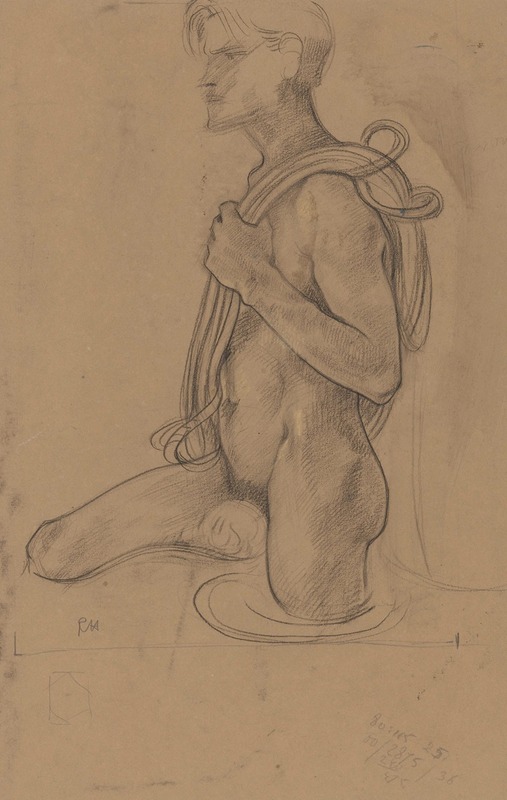
Staand mannelijk naakt in het water met touw over de schouder
A hand-painted replica of Richard Nicolaüs Roland Holst’s masterpiece Staand mannelijk naakt in het water met touw over de schouder, meticulously crafted by professional artists to capture the true essence of the original. Each piece is created with museum-quality canvas and rare mineral pigments, carefully painted by experienced artists with delicate brushstrokes and rich, layered colors to perfectly recreate the texture of the original artwork. Unlike machine-printed reproductions, this hand-painted version brings the painting to life, infused with the artist’s emotions and skill in every stroke. Whether for personal collection or home decoration, it instantly elevates the artistic atmosphere of any space.
Richard Nicolaüs Roland Holst was a prominent Dutch artist known for his contributions to the Symbolist movement in the late 19th and early 20th centuries. Born on December 4, 1868, in Amsterdam, Holst was a versatile artist, working in various mediums including painting, drawing, and printmaking. He was also a significant figure in the Dutch arts and crafts movement, contributing to the development of applied arts in the Netherlands.
One of his works, "Staand mannelijk naakt in het water met touw over de schouder" (Standing Male Nude in the Water with Rope over the Shoulder), exemplifies his skill in capturing the human form and his interest in symbolic and allegorical themes. This piece, like many of Holst's works, reflects his deep engagement with the human figure, a central subject in his artistic oeuvre.
Holst was educated at the Rijksakademie van Beeldende Kunsten in Amsterdam, where he was influenced by his teachers and the prevailing artistic movements of the time. His style was shaped by Symbolism, a movement that sought to express ideas and emotions through symbolic imagery and themes. This influence is evident in "Staand mannelijk naakt in het water met touw over de schouder," where the depiction of the male nude can be interpreted as a study of human strength, vulnerability, and connection to nature.
Throughout his career, Holst was associated with several artistic and literary circles, which played a crucial role in the dissemination of Symbolist ideas in the Netherlands. He was married to Henriette Roland Holst, a well-known poet and socialist, and together they were influential figures in both the artistic and political landscapes of their time.
Holst's work often explored themes of spirituality, nature, and the human condition. His interest in these subjects is reflected in the way he portrayed the human body, not merely as a physical entity but as a vessel of deeper meaning and connection to the world. The use of a rope in "Staand mannelijk naakt in het water met touw over de schouder" could be seen as a metaphor for the ties that bind individuals to their environment and to each other, although specific interpretations would depend on the viewer's perspective.
In addition to his work as a painter and draughtsman, Holst was also a respected teacher and mentor. He served as a professor at the Rijksakademie, where he influenced a new generation of artists. His teachings emphasized the importance of craftsmanship and the integration of art into everyday life, principles that were central to the arts and crafts movement.
Richard Nicolaüs Roland Holst passed away on December 31, 1938, leaving behind a legacy of artistic innovation and a body of work that continues to be studied and appreciated for its depth and symbolic richness. His contributions to Dutch art, particularly in the realm of Symbolism, remain significant, and his works are held in various collections, reflecting his enduring influence on the art world.





